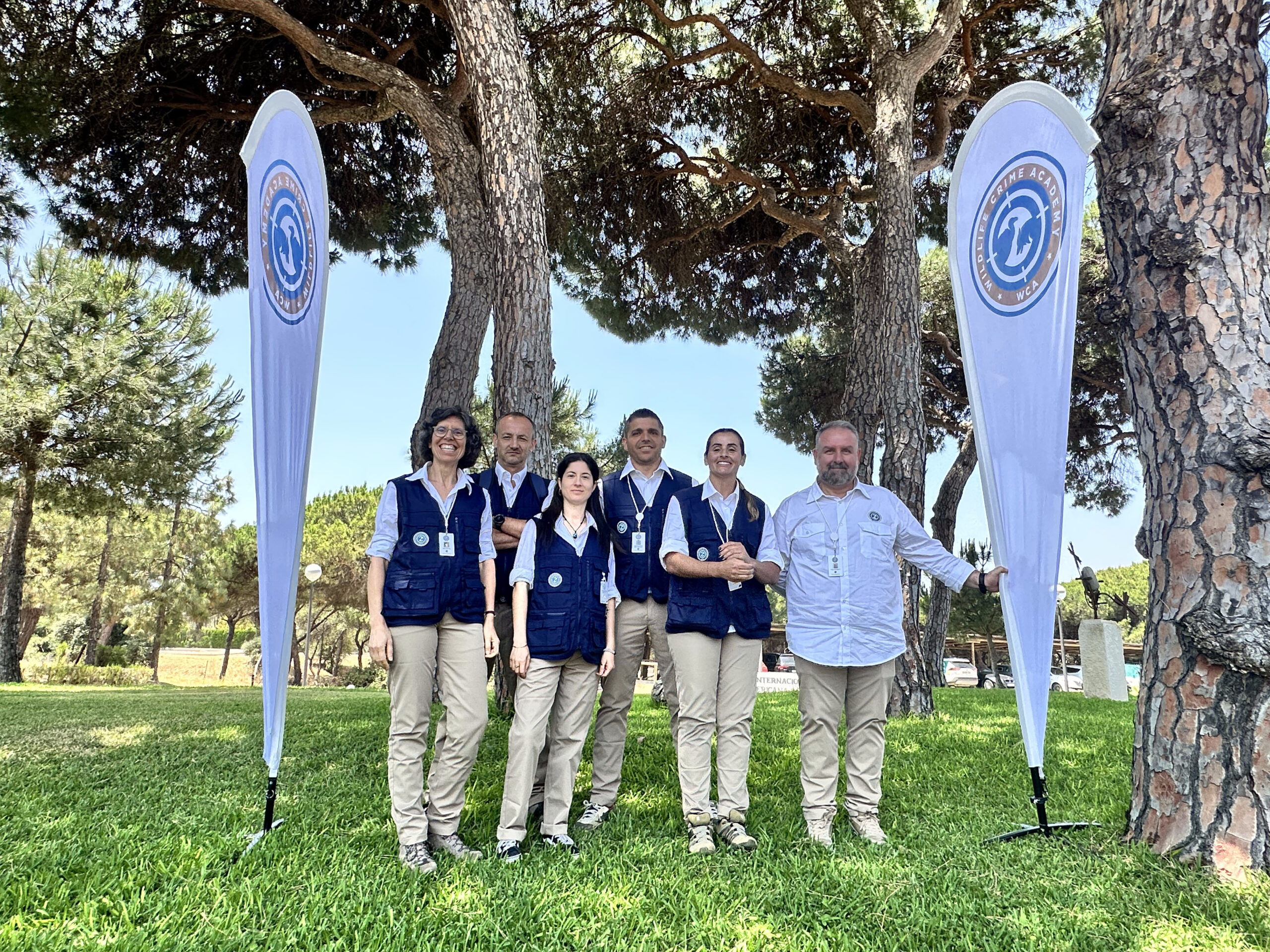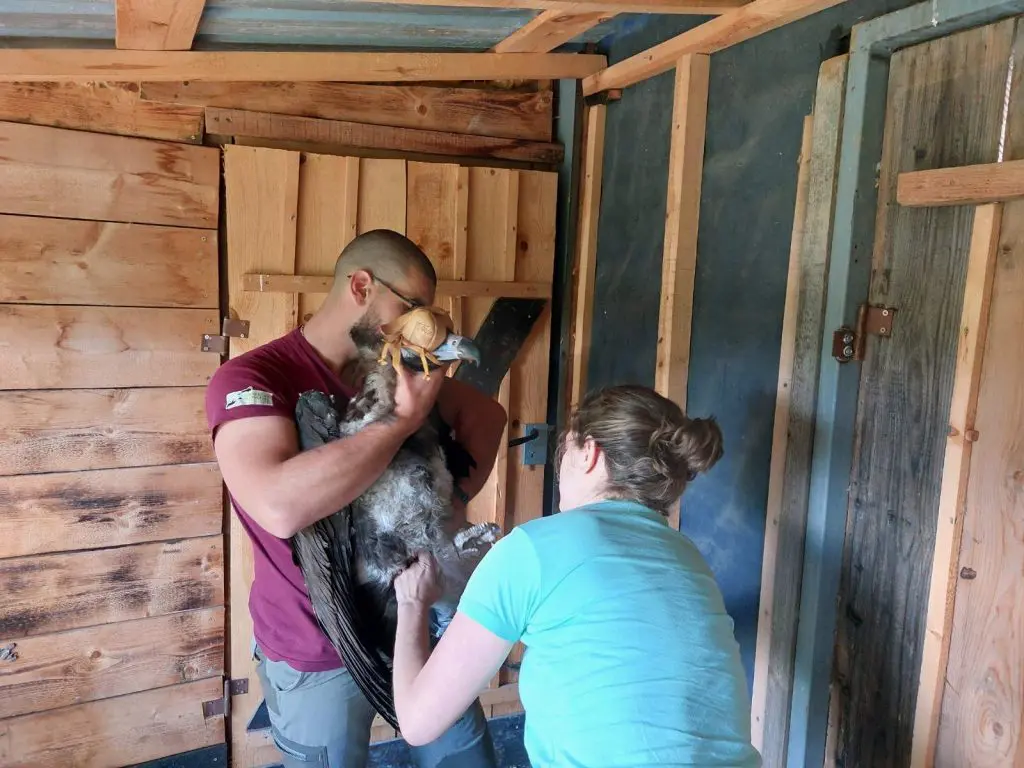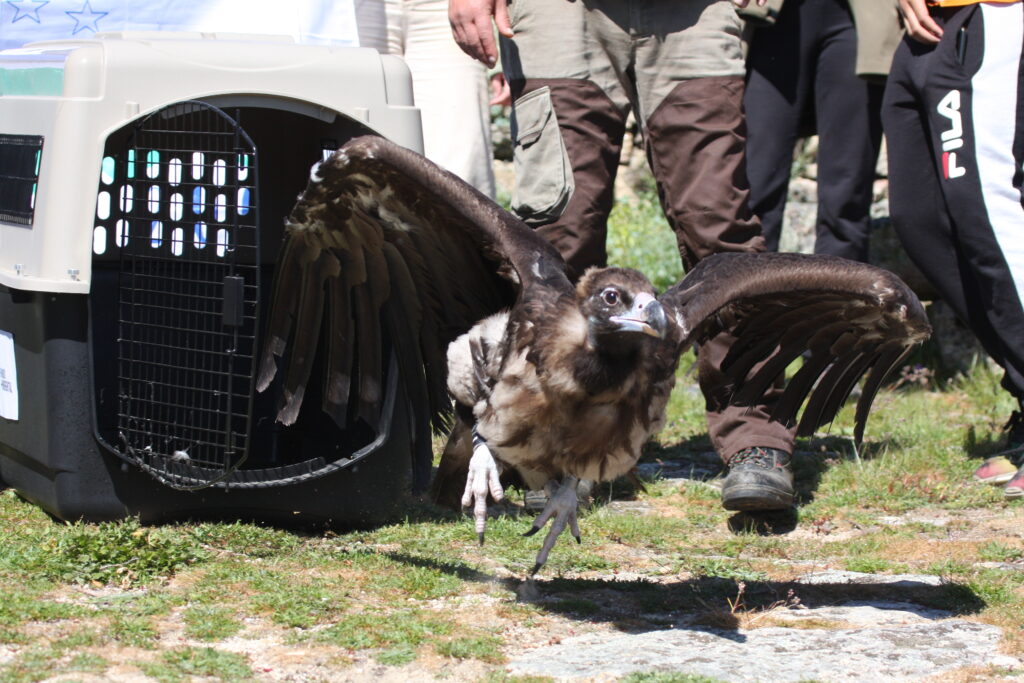
Can you imagine a better way to welcome spring than the release of a bird into the wild? Just a few days ago, on March 21st, we released Zimbro, a male Cinereous Vulture (Aegypius monachus), into the wild of northeast Portugal. The release marked the end of a long and complex rehabilitation process in three different wildlife recovery centres, where he received veterinary treatment and physiotherapy to recover from his injuries. This bird was given a fitting name, as it was named after a juniper tree to celebrate the International Day of Forests. But that’s not all – the name also draws attention to the bird’s unusual choice of nesting sites in the Douro International Natural Park. It’s a rare sight only observed in one other place in Spain, at the Natural Park of Las Batuecas. Before the release, the LIFE Aegypius Return project team fitted Zimbro with a GPS transmitter, which will allow us to keep track of his movements and behaviour over the coming months.
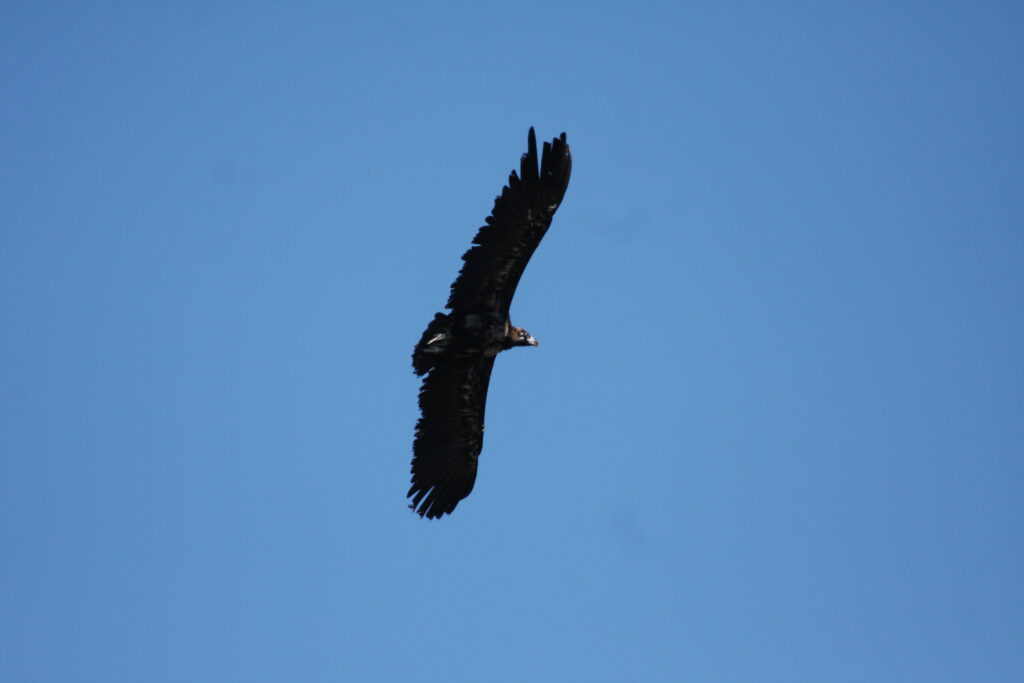
Zimbro’s long rehabilitation process
Back in September 2021, Zimbro was found in a very weak condition in Porto de Mós (Leiria, Portugal) and entered the Wildlife Rescue Centre in Lisbon (LXCras), where it stayed under the attentive care of the veterinary staff for over a year. The rehabilitation was complex and long-lasting, as the bird developed secondary lesions. After being submitted to veterinary treatment and physiotherapy, Zimbro fully recovered from its injuries by December 2022.
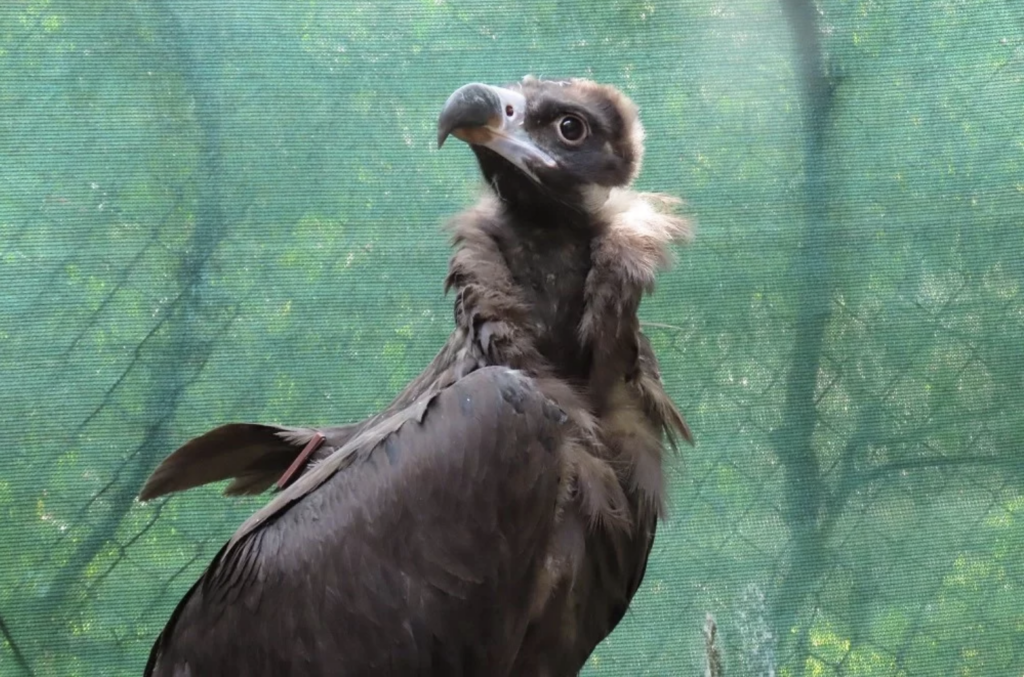
The veterinary team decided that Zimbro needed a bigger flight tunnel to tonify and strengthen its muscles before being fit to fly again in the wild. So, in coordination with ICNF (the Portuguese national agency for Nature Conservation and Forests), the bird was transferred to the Wildlife Recovery Centre in UTAD (Trás-os-Montes e Alto Douro University).
In his last weeks before release, Zimbro was transferred to CIARA (Interpretation and Wildlife Rescue Centre), a kind of five-star wildlife rehab clinic that hosts the largest flight tunnel in Portugal and mimics the local natural habitat. Located in the northeast, the stayover allowed Zimbro to acclimatise to the area and climate conditions while socialising with other vultures.
A Cinereous Vulture released in the Douro International Natural Park
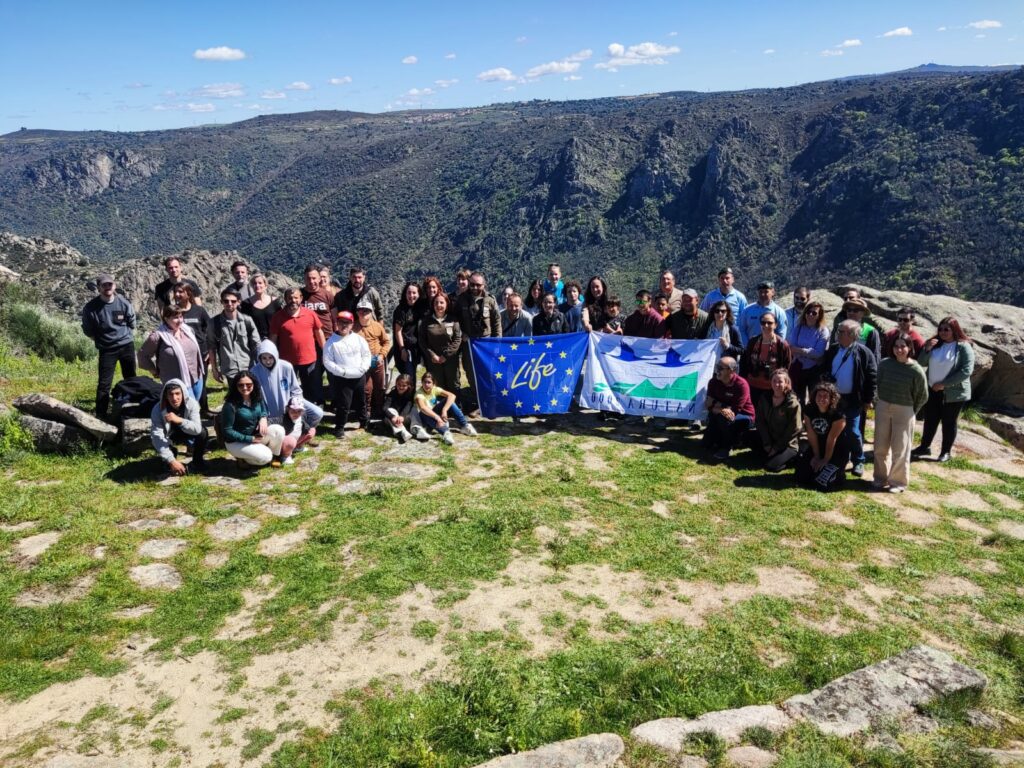
With an astonishing view over the Douro valley, dozens of curious people attended the release of Zimbro. They were welcomed by the Vulture Conservation Foundation’s Portuguese team, together with our local partners from Palombar, who introduced the LIFE Aegypius Return Project and our collective efforts to double the breeding population of Cinereous Vultures in Portugal by 2027. Then CIARA, represented by the Association of Municipalities from Baixo Sabor (AMBS), and veterinaries involved in Zimbro’s rehabilitation explained the recovery process and highlighted the important cooperation work between the three recovery centres and the national authorities. Among the participants, there were also project partners ATN and GNR (SEPNA); ICNF rangers from the Nature Park; representatives from different municipalities; students from Freixo de Espada à Cinta school – who baptised Zimbro; and people from the local community.
The Douro International Natural Park hosts one of the four breeding colonies of the species in the country. The two pairs that bred in the steep cliffs above the river Douro in the last seasons were confirmed again this year and are currently incubating their eggs. They are being followed from close by the staff at Palombar, who are also monitoring areas with high breeding potential places to install new artificial nesting platforms. Running until 2027, the project seeks to improve nest availability and safety across the border between Portugal and Western Spain and therefore, 120 artificial nesting platforms will be installed and 105 natural and artificial nests will be repaired.
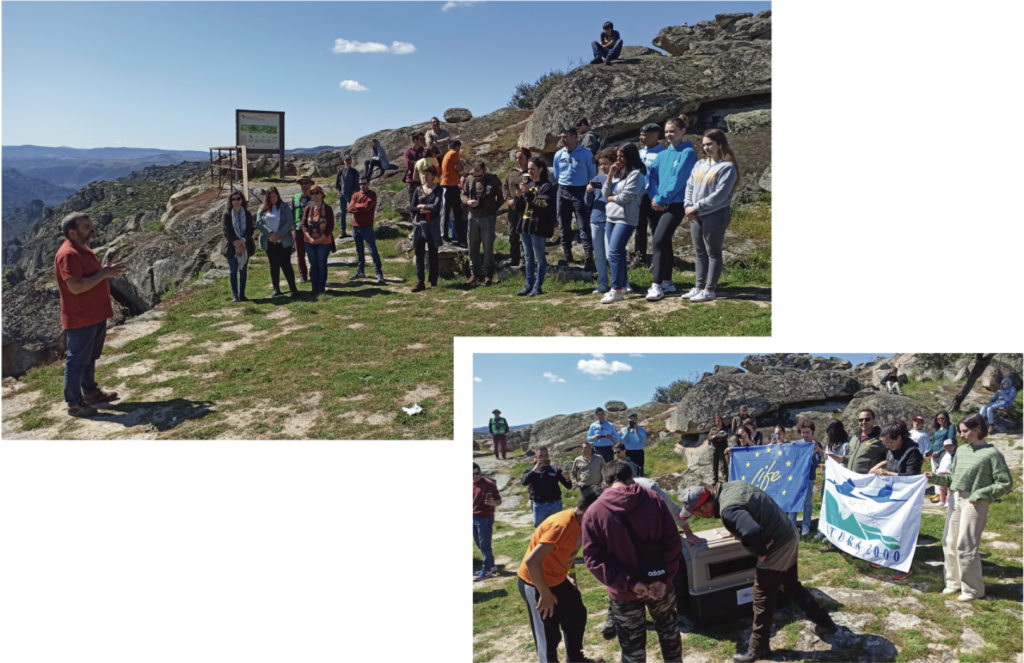
Boosting the Cinereous Vulture population in Portugal
The Cinereous Vulture is a Critically Endangered species in Portugal, which was extinct for almost four decades in the country and made a natural comeback in 2010. Although the Spanish population has been steadily recovering – it now numbers 3,000 breeding pairs – in Portugal, there are only 40 breeding pairs in 4 different colonies. The Douro International Natural Park hosts the most fragile colony, with only two breeding pairs, hence we are committed to reinforcing the population in this area. The project aims to introduce 20 rehabilitated individuals into this colony through soft release once the acclimatisation facility is installed in northeast Portugal.
One of the actions of the LIFE Aegypius Return is to study the behaviour of Cinereous Vultures. At least 60 Cinereous Vultures will be fitted with a GPS transmitter and monitored by the VCF team. The GPS data collected provides insightful information about the birds’ location and ecology, allows a swift response in case the birds need to be rescued and helps identify and mitigate threats the species face.
With his brand-new GPS transmitter in place, soon we will be able to share the movements of Zimbro! Will he stay in Portugal or visit the Cinereous Vulture colonies in Spain?
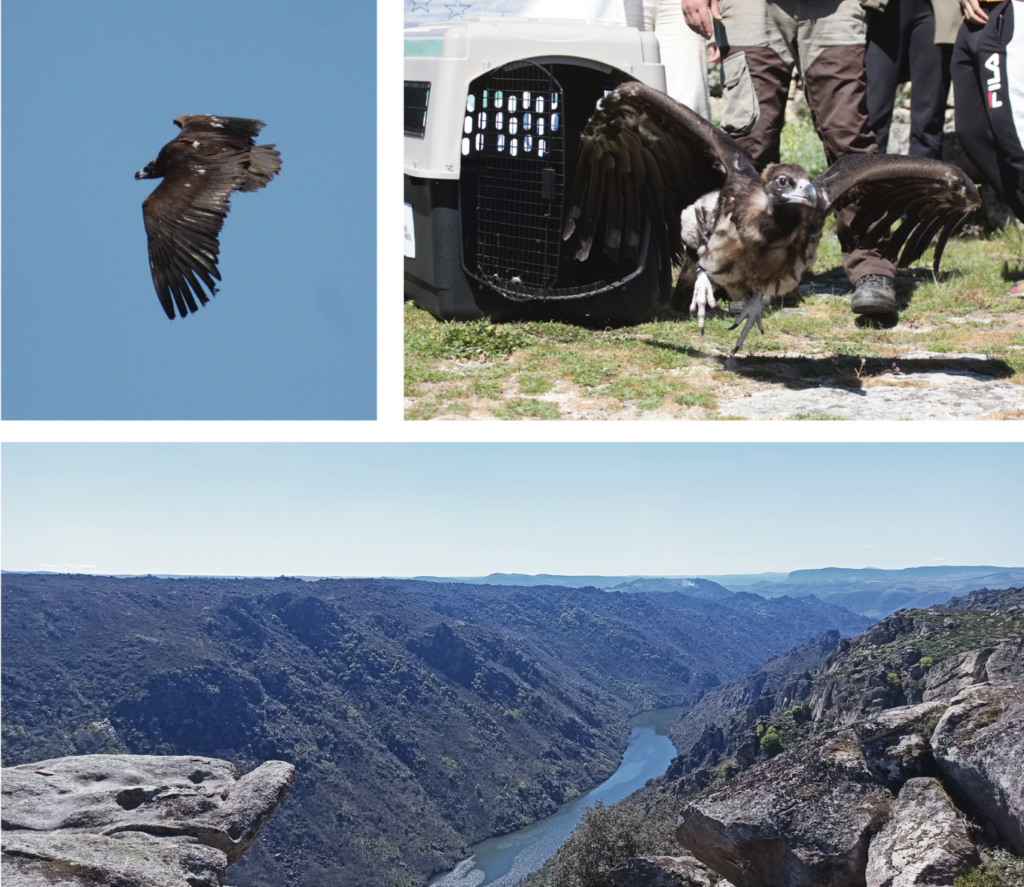
The LIFE Aegypius Return Project
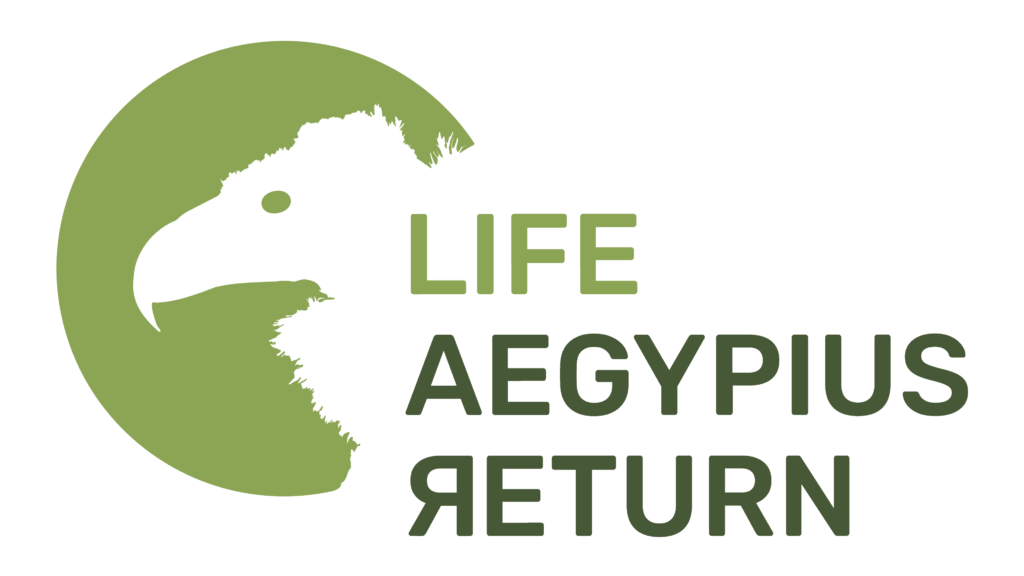
The LIFE Aegypius Return project has ambitious yet attainable goals to secure the comeback of the Cinereous Vulture in Portugal and western Spain. Until the end of the project in 2027, the team aims to double the breeding population in Portugal, encourage connectivity between colonies and downgrade the national conservation status from Critically Endangered to Endangered.
It is a 3.7 million project, co-financed by the European Union’s LIFE Programme, whose success relies on the involvement of all relevant stakeholders and the extensive collaboration of the leading project partner, the Vulture Conservation Foundation (VCF), with all local partners: Palombar – Conservação da Natureza e do Património Rural, Herdade da Contenda, Sociedade Portuguesa para o Estudo das Aves, Liga para a Proteção da Natureza, Associação Transumância e Natureza, Fundación Naturaleza y Hombre, Guarda Nacional Republicana e Associação Nacional de Proprietários Rurais and Associação Nacional de Proprietários Rurais Gestão Cinegética e Biodiversidade.



